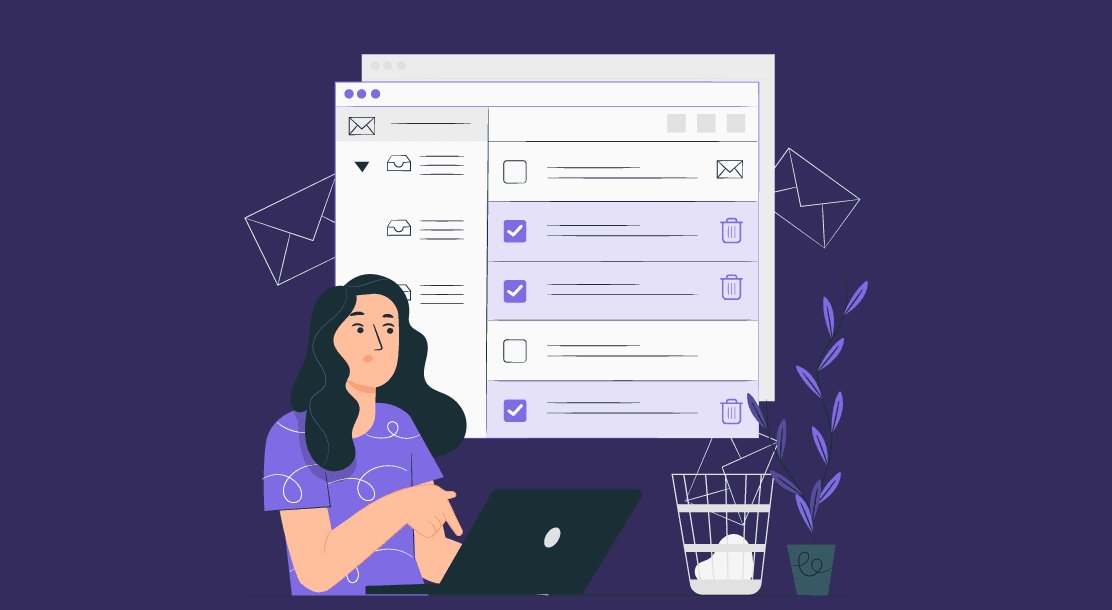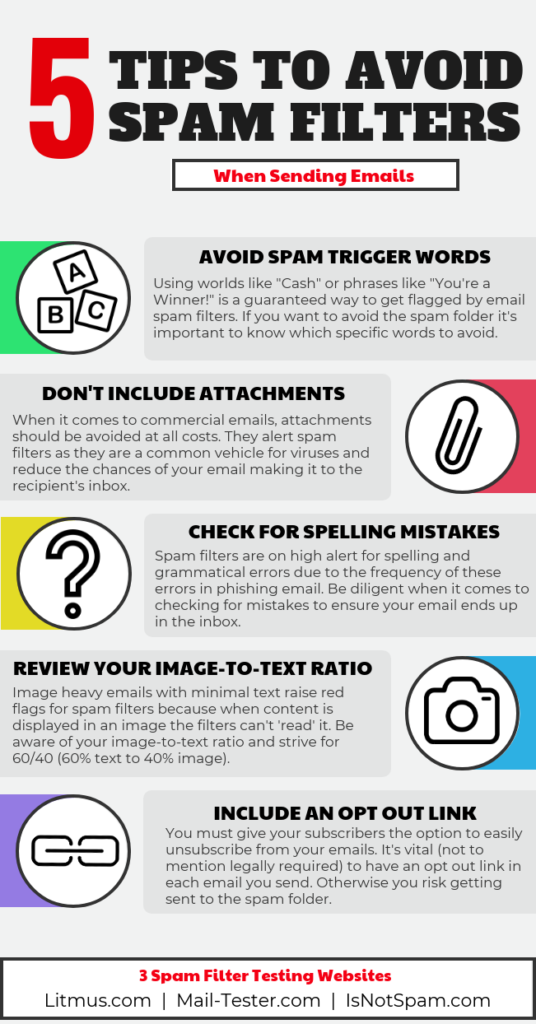10 Email Marketing Mistakes That Can Kill Your E-Commerce Sales

Table of Contents
- 10 E-Commerce Email Marketing Mistakes You Should Avoid
- Key Takeaways
- Conclusion
- FAQs
- Quick Tips: 5 Email Marketing Tips To For E-Commerce Businesses
So, you have a great product with a killer description and you’re positive it will turn into sales. Encouraged by the success of your online store, you decide it’s time to move on to another e-commerce conquest — email marketing.
Email marketing is a great way for an e-commerce business to build awareness, nurture a lead, and drive sales. A Forrester study found that email marketers who send emails weekly get 55% higher sales revenue than those who send less frequently.
But as anyone who’s ever tried to send an email newsletter knows, there’s a fine line between creating a great experience and annoying your list members with spammy emails. Poorly constructed emails can end up in recipients’ spam folders, and even the most carefully constructed emails can fall victim to the ever-changing nature of inboxes.
To ensure your brand’s emails have the best chance of reaching their intended audience and driving sales, here are 10 e-commerce email marketing mistakes you should avoid:

10 E-Commerce Email Marketing Mistakes You Should Avoid
1. Not sending abandoned cart and recovery emails

Let’s start with one of the most common email marketing mistakes. Not sending abandoned cart recovery emails and order confirmation emails to your customers.
One of the reasons why these types of emails are so important is because they are a great way to recover lost sales. While some people may not abandon their cart, most do at some point during the checkout process.
This is a missed opportunity for you to recover their sale. Something about your store likely turned them off. They either did not like your prices or didn’t feel comfortable using your payment gateway. They may have found another item that they wanted more.
So if you have any type of abandoned cart recovery email system set up in your e-commerce store, you should be sure to capture these potential sales right when they are on their way out the door!
2. Spamming with too many emails

The worst thing than not knowing how to start is not knowing when to stop. We have all encountered an e-commerce store we end up regretting making purchases from because they turn your inbox into a dump yard. Every offer, launch, and irrelevant news is bombarded at you making them worse than those annoying relatives.
Don’t be that brand. Please don’t overwhelm your subscribers with too many emails. Email them only if you have something important, relevant, or necessary to say.
3. Buying a list
When starting email marketing for a small business it looks easy to buy a bulk email list, send out millions of marketing emails and make more money. But it’s not. It’s illegal as well as unethical.
Buying off data and contacting a person without their permission is a data breach and a blatant invasion of privacy. Most service providers have strict policies against using bought-off email lists and you may be barred from running email marketing campaigns for your e-commerce store. Not to mention if you get fined for violation of various privacy protection laws.
You have no idea about who these people are, you are not even sure they will be interested in your product.
4. Sending emails without a call-to-action CTA

One of the biggest email marketing mistakes is not having a clear call to action. If you find that you are sending out too many emails without getting any orders then this could be because you’re not telling people what to do.
Your prospects need to know exactly what action you want them to take to get the offer. This could mean purchasing or signing up for something. But it needs to be something that benefits them and also benefits your business. If a customer does not see this as beneficial for them, they are not likely going to follow through with any kind of action within your email.
Inserting too many call-to-action instances may distract the reader.
5. Not segmenting your email list based on the actions taken by the user
The idea behind segmenting your email list is to divide your customers into different groups and send them targeted messages based on their individual preferences. You can segment according to interests, demographics, and many other criteria.
One of the best ways to create a segmented email list is by using retargeting ads. Retargeting ads allow you to reach out to people who have visited your online store before and then show them relevant ads so that they will come back and buy from you again.
6. Not testing your emails against one another

Emails aren’t an exact science by any means, but they are not completely random, either. You can tell a good email from a bad one pretty easily. But the only way you’ll know that is if you test them against each other.
Do a split A/B test. If you don’t, you’ll never know what works and what doesn’t. You should be testing every part of your message, including:
- The subject line
- The call to action
- The design
This exercise allows you to improve what isn’t working which will result in higher open rates and click-through rates. It will also save you money because this will prevent you from having to send out extra emails.
7. Sending image-heavy emails

So what exactly is an image-heavy email? It is an email that has lots of images and graphics. Does this sound like something you do? I bet it does. After all, it seems like a great idea to include images and graphics in your emails so that the reader can see what you are talking about.
Thing is, most people do not have high-speed internet access, so making them wait for your email to load could be killing your sales before they even open your emails. You might want to reconsider sending out those image-heavy emails.
8. Sending sales emails only
The problem with sending only sales emails is that your customers will come to expect this and so they won’t open your emails. They’ll just mark them as spam, or even worse, unsubscribe from your mailing list completely.
You also limit the amount of content you can share with your subscribers.
9. Sending long emails
One of the best ways to kill your email marketing is to send out an email that is too large. It may sound surprising, but a study from Experian shows that people are four times more likely to click on a link in an email if it is shorter than 250 characters.
The average length of an online shopping cart abandonment email is over 600 characters long. That means those emails are missing out on potential sales.
10. Not tracking the right metrics

Within e-commerce, marketers and sales teams often have different goals. Marketing is responsible for bringing in new customers, and sales are responsible for turning those customers into repeat buyers (and hopefully brand advocates). If you’re not measuring the right e-commerce metrics, it’s easy to assume that you’re doing a great job, when in reality you might be creating more work for yourself in the long run.
You need to track conversions, sales, and revenue generated by your email marketing efforts. This will help you determine which email subject line types are most effective, where your opt-in forms are located on your site, and which time of day offers the best response rates. And it will allow you to determine whether you should make wholesale changes to your email program or tweak a few areas for improvement.
Conclusion
With these 10 email marketing mistakes in mind, you should be well on your way to sending effective, customer-centric e-mails that drive customer engagement while boosting your sales.
The most successful e-commerce retailers take the time to fully understand their customers and how they want to be communicated with — not just what they want to be sold. Take a cue from their best practices, and make sure you’re sending the kinds of emails your customers have come to expect. Here are 5 quick ones to help you get started.
At the end of the day, email marketing is a numbers game. There is no magic formula that will ensure your emails are seen, read, and acted upon. Instead, it takes effort, energy, and creativity to make it work for you. But if you avoid these 10 email marketing mistakes and take a data-driven approach to your campaigns, you’re likely to see strong returns.
Your email list isn’t the only channel you can use to build your brand and drive sales, but it’s certainly the most direct. And when used properly, it can do wonders for your e-commerce business.
Key Takeaways
Here are some quick checkboxes you can keep handy while sending out the next email campaign
- Set Goals: You have to know where you want to reach and by when. So set, clear, measurable goals.
- The personas you are going to target
- Measuring metrics
- The desired outcome of the email marketing campaign
- Keep a clean list
Update your email list, making sure it is segmented properly, based on audience demographics and choices.
- Automate your email sequences
Pick a good platform that allows marketing integration and stick to it. You’ll need it to scale your email marketing efforts.
- Respect your audience
Never underestimate the value of decency and empathy. Be relevant, be valuable and write with a sense of building your reputation
- Always send a welcome mail
It is the basic step to build a good relationship upon. Think of how you’d build a bond with a customer if he visited your physical store. That’s why a welcome email is a courtesy mail you send while acknowledging a future customer who chose to visit your e-commerce store.
FAQs
The 5Ts are a simple and effective way to help avoid common email marketing mistakes. The s Ts are Tease, Target, Teach, Test and Track.
Emails come in all forms but the most relevant ones for e-commerce stores are the commerce following:
– Email Newsletters
– Acquisition Emails
– Retention Emails
– Promotional Emails
– Best Overall: Mailchimp
– Best for E-commerce: Drip
– Best for Automation: ActiveCampaign
– Easiest to Use: MailerLite
– Best All-in-One Marketing Suite: Hubspot
Latest Blogs
Explore how Google’s 2025 AI search updates triggered ranking chaos. Learn actionable strategies to adapt your SEO for AI Overviews, zero-click searches, and SERP volatility. Stay ahead now.
Learn how to rank on AI search engines like ChatGPT, Perplexity, and Gemini by optimizing your content for authority, structure, and relevance. Stay ahead in AI-driven search with this strategic guide.
Explore the best healthcare SEO services for your medical practice. Improve online visibility and effectively reach more patients in need of your services.
Get your hands on the latest news!
Similar Posts

Email Marketing
6 mins read
11 Tips to Design Impactful Email Banners

Design
9 mins read
7 Benefits of a Simple Mailer Design

Email Marketing
7 mins read